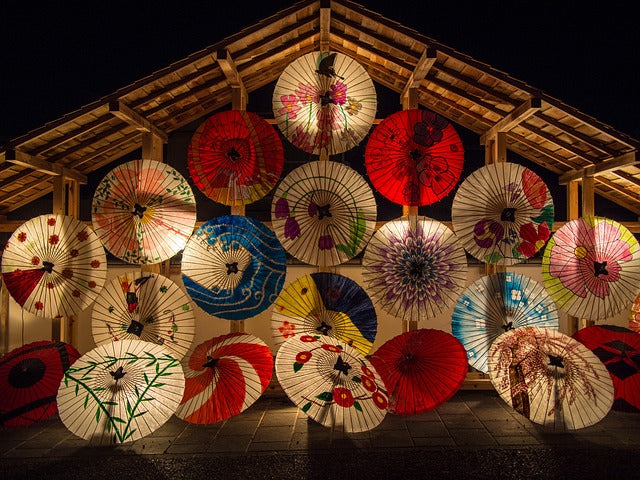What is Sashimono?
Sashimono is a type of traditional Japanese woodworking that uses precise joinery techniques, fitting pieces of wood together without nails, and without exposing the joints on the surface. You may be more familiar with sashimono furniture in the form of Japanese cabinets (tansu) or traditional wooden furniture. The name sashimono comes from the use of rulers (sashi) in the precise assembly of the wood.
This craft requires not only precise design but also a high level of skill and experience, making it a true testament to Japanese artisanship. Historically, items like wedding dowry cabinets, decorative boxes, and Buddhist altars were custom-made by sashimono craftsmen. If you happen to have an old Japanese-style cabinet at home, it might be an antique sashimono piece!
The History of Sashimono: From Buddhist Temples to Everyday Use

The history of sashimono dates back to the Nara period (710–794), when Buddhist culture entered Japan. The woodworking skills brought with Buddhism were initially used for temples and sacred objects. Later, during the Heian period (794–1185), these techniques were applied to the furniture used by the nobility and clergy.
During this time, a box-making technique called “hakozukuri” was developed, producing boxes to store incense, calligraphy tools, or medicinal items. The craft evolved to include furniture such as screens (kichou) for indoor decoration and armrests (kyousoku) to support the body. These artisans were protected by the aristocracy, working alongside lacquer artists to produce luxury goods.
By the Azuchi-Momoyama period (1568–1600), sashimono techniques began spreading to common furniture. However, the designs remained elaborate, as they catered primarily to aristocrats and tea ceremony enthusiasts. In the Edo period (1603–1867), the craft developed further, with a shift towards simpler, natural wood designs that appealed to the growing merchant class. This aesthetic, known as “Edo style,” emphasized minimalism and elegance.
Famous Schools of Sashimono

Edo Sashimono
Edo sashimono, designated as a traditional craft by the Japanese government in 1997, originated from the tools used by the samurai class. Under the patronage of Tokugawa Ieyasu, skilled artisans were gathered in the Nihonbashi area of Edo (present-day Tokyo), where they refined the simple yet elegant "Edo style" furniture. Today, the production of Edo sashimono continues in areas such as Taito, Arakawa, and Koto wards in Tokyo.
Kyoto Sashimono
Kyoto sashimono evolved from furniture used for Buddhist rituals and tea ceremonies. Known for its intricate lacquerwork and decorative designs, this type of furniture features high-end materials like solid wood planks and woods such as paulownia, cedar, and zelkova. In 1976, Kyoto sashimono was officially designated as a traditional craft, with production continuing exclusively in Kyoto today.
Osaka Karaki Sashimono
Osaka karaki sashimono traces its origins to the importation of rare Chinese woods during the Nara period. It flourished in the tea ceremony culture of the Momoyama period and later became popular with merchants in Edo. Known for its polished lacquer finishes, Osaka sashimono received government recognition in 1977, with production centered in Osaka and neighboring regions.
Explore Traditional Sashimono Furniture
Tansu (Cabinets)
Tansu is the most iconic form of sashimono furniture, originally crafted as part of a bride’s dowry. While some regional varieties like Sendai zelkova tansu are large and ornate, Edo sashimono focused on smaller storage items, such as jewelry boxes. High-quality tansu often feature intricate lacquerwork and decorative metal fittings.
Ranbako (Open Storage Boxes)
These open storage boxes are often used in inns to store yukata robes and towels. Traditionally made from paulownia wood, they are lightweight yet durable, sometimes featuring lacquer designs or handles shaped like pine trees or crescent moons.
Desks and Low Tables
Unlike Western-style desks, these flat, low tables are designed to be used while sitting on the floor. Famous Japanese authors, such as Yasunari Kawabata and Eiji Yoshikawa, were known to commission desks from master sashimono craftsmen. These pieces were considered essential tools for creative work.
Preserving the Beauty of Traditional Crafts
In today’s market, mass-produced furniture has made it difficult for handcrafted pieces to thrive. However, there is still immense value in Japanese woodworking traditions. A well-crafted sashimono cabinet is said to fit so perfectly that closing one drawer creates enough air pressure to open another. If you ever have the chance, we encourage you to touch and experience the smooth, natural texture of a sashimono piece.
At Kimono Art Interior, we aim to preserve the essence of Japan's traditional craftsmanship by using Nishijin-ori kimono fabric in modern interior designs. Our fabric boards blend the precision of traditional crafts with contemporary décor, offering a unique way to bring Japanese heritage into your home. Explore our collection online today!

